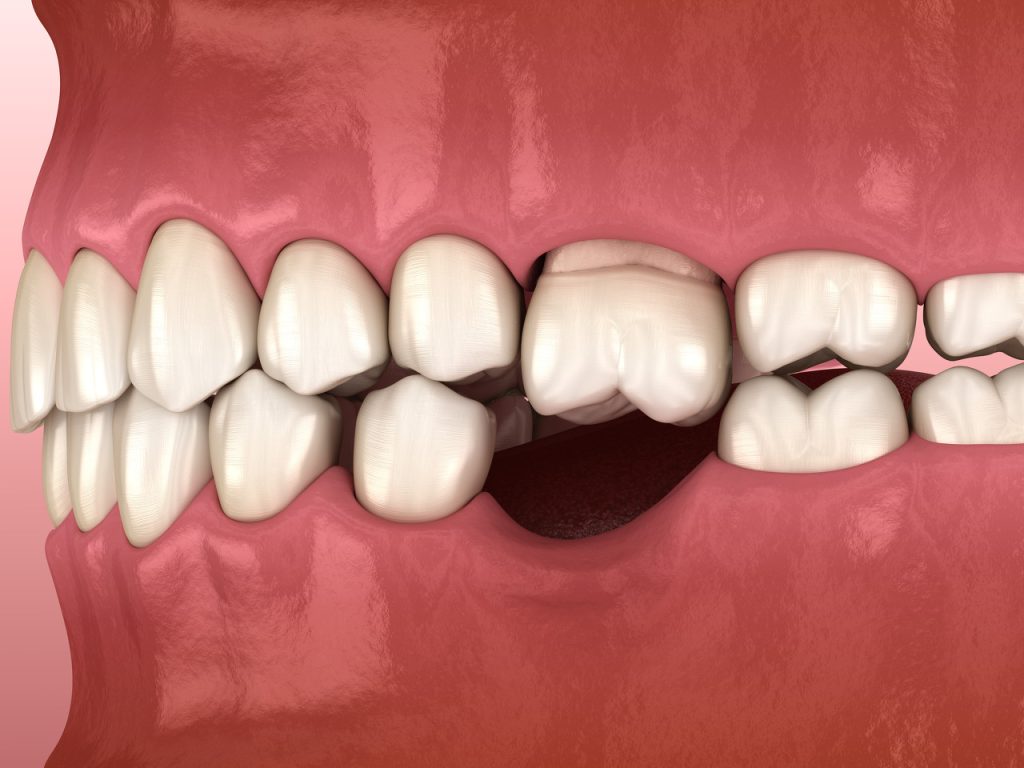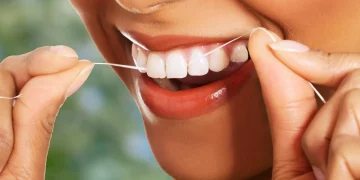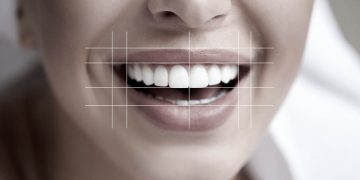Introduction
Losing a tooth can be a frustrating experience, not just because of the aesthetic impact but also due to the functional challenges it creates. Missing teeth can make it difficult to chew, speak clearly, and can alter the structure of your mouth over time, leading to potential misalignments and additional dental issues. However, thanks to advancements in modern dentistry, there are several effective solutions for restoring both the function and aesthetics of missing teeth.
Whether it’s a single tooth or multiple teeth, modern dental treatments can bring back your smile and improve your oral health. In this article, we’ll explore the most popular and effective treatment options available for restoring missing teeth, along with the benefits and considerations of each.
1. Dental Implants: The Gold Standard in Tooth Restoration
What Are Dental Implants?
Dental implants are titanium posts that are surgically placed into the jawbone to act as a replacement for the root of a missing tooth. Once the implant is placed and has integrated with the bone (a process called osseointegration), a custom-made crown is attached to restore the appearance and function of the missing tooth.
Benefits of Dental Implants:
- Natural Appearance and Feel: Dental implants closely mimic the look and feel of natural teeth, making them one of the most aesthetic options for tooth replacement.
- Permanent Solution: Implants are designed to last a lifetime with proper care. They don’t require the same maintenance as bridges or dentures and don’t need to be replaced regularly.
- Improved Functionality: Implants restore chewing efficiency, allowing you to eat most foods without difficulty. Since they are anchored in the jaw, they offer better support than removable options.
- Preserve Jawbone Health: Unlike dentures, dental implants prevent bone loss by stimulating the jawbone, just like natural tooth roots. This helps maintain facial structure and prevents further dental issues down the line.
When to Choose Dental Implants:
- When you want a long-term, permanent solution that restores both the function and aesthetics of your teeth.
- If you have lost a single tooth or multiple teeth and want an option that is close to your natural teeth in both look and feel.
2. Dental Bridges: A Reliable Solution for Missing Teeth
What Are Dental Bridges?
A dental bridge consists of one or more artificial teeth that are supported by adjacent healthy teeth or implants. It “bridges” the gap left by missing teeth, offering a fixed solution that restores both functionality and aesthetics.
Types of Bridges:
- Traditional Bridges: Made from porcelain, metal, or a combination of materials, these bridges rely on adjacent natural teeth for support.
- Cantilever Bridges: Used when there are healthy teeth on only one side of the missing tooth, this bridge is attached to a single adjacent tooth.
- Implant-Supported Bridges: When dental implants are used as the support for the bridge, offering greater stability and a longer-lasting solution.
Benefits of Dental Bridges:
- Restores Appearance: Bridges provide a natural-looking solution for missing teeth, improving the aesthetics of your smile.
- Improved Functionality: A bridge restores the ability to chew and speak more effectively by filling the gap created by missing teeth.
- Supports Facial Structure: Like implants, bridges can prevent the shifting of adjacent teeth and maintain the structure of the face.
When to Choose Dental Bridges:
- If you have one or more missing teeth and want a fixed, non-removable solution.
- If you are not a candidate for dental implants (e.g., insufficient bone density) but still want a durable restoration.
3. Partial Dentures: A Flexible and Removable Option
What Are Partial Dentures?
Partial dentures are removable prosthetic devices designed to replace one or more missing teeth. They are typically made of acrylic and are custom-fitted to your mouth. Partial dentures often use clasps or attachments to secure them to remaining natural teeth.
Benefits of Partial Dentures:
- Non-Invasive: Unlike implants, partial dentures do not require surgery, making them a less invasive option for replacing missing teeth.
- Cost-Effective: Partial dentures are generally more affordable than dental implants or bridges, making them a great option for people on a budget.
- Removable: Partial dentures can be easily removed for cleaning, making maintenance easier than fixed solutions.
When to Choose Partial Dentures:
- If you have multiple missing teeth in different areas of the mouth and are looking for a non-permanent, removable solution.
- If you’re seeking a more affordable option compared to dental implants or bridges.
4. Full Dentures: Restoring Complete Function for Those Missing All Teeth
What Are Full Dentures?
Full dentures are removable prosthetic devices designed to replace all the teeth in either the upper or lower jaw. They are made of acrylic or a combination of acrylic and porcelain and are custom-made to fit your gums. Full dentures can be either conventional (placed after the gums have healed post-tooth loss) or immediate (placed right after the teeth are removed).
Benefits of Full Dentures:
- Restores Full Function: Full dentures restore the ability to chew, speak, and smile naturally after the loss of all teeth.
- Improved Appearance: Full dentures are designed to look as natural as possible, filling out your smile and preventing the sunken facial appearance often caused by missing teeth.
- Affordable Option: Full dentures are one of the most affordable tooth replacement solutions, making them accessible to a wide range of people.
When to Choose Full Dentures:
- If you have lost all of your teeth in either the upper or lower jaw and need a solution to restore full function and appearance.
- If you’re looking for an affordable, removable option for replacing all your teeth.

5. All-on-4 Implants: A Full Arch Restoration with Fewer Implants
What Are All-on-4 Implants?
The All-on-4 dental implant system is a treatment that allows a full set of teeth to be supported by only four implants. This system is especially useful for people who have lost most or all of their teeth but don’t want to undergo extensive surgery for a complete implant solution.
Benefits of All-on-4 Implants:
- Fewer Implants, Full Restoration: This technique uses only four strategically placed implants to support an entire arch of replacement teeth, reducing the need for multiple implants.
- Quick Treatment: All-on-4 can typically be completed in a shorter time frame compared to traditional implants, with some patients able to receive a temporary set of teeth on the same day.
- Long-Lasting: With proper care, All-on-4 implants provide a permanent solution that restores both function and appearance.
When to Choose All-on-4 Implants:
- If you’ve lost most or all of your teeth and want a full, permanent restoration without the need for many implants.
- If you’re looking for a quicker and more cost-effective way to restore your smile compared to a traditional full-arch implant procedure.
6. Bone Grafting and Sinus Lifts: Supporting Implant Placement in Complex Cases
What Are Bone Grafting and Sinus Lifts?
For some people, a lack of sufficient bone density in the jaw may prevent them from receiving dental implants. Bone grafting and sinus lifts are procedures that add bone material to the jaw to create a strong foundation for implants.
- Bone Grafting: Involves taking bone material (from another part of the body or a synthetic source) and grafting it onto the jawbone.
- Sinus Lifts: Performed when there is not enough bone in the upper jaw, often in the molar and premolar regions, to place implants. A sinus lift involves lifting the sinus membrane and adding bone to support implant placement.
Benefits of Bone Grafting and Sinus Lifts:
- Enables Implant Placement: These procedures make dental implants possible for people with insufficient bone density, helping to restore both function and appearance.
- Long-Term Solution: Once the bone graft has integrated with the jaw, it provides a stable foundation for implants, ensuring the long-term success of the restoration.
When to Choose Bone Grafting and Sinus Lifts:
- If you have insufficient jawbone density and need additional support for dental implants.
- If you’re seeking a permanent solution for missing teeth but are unable to receive implants without bone augmentation.
Conclusion
Losing a tooth (or several) doesn’t mean you have to live with an incomplete smile. With modern dental treatments, you can restore both the function and aesthetics of your teeth, no matter how many you’ve lost. Whether you choose dental implants, bridges, dentures, or a combination of solutions, each treatment offers distinct advantages depending on your unique needs and lifestyle.
Consulting with a skilled dentist or prosthodontist is crucial to determining the best solution for your dental concerns. They will evaluate your oral health, jawbone structure, and overall goals to guide you through the process and help you achieve a beautiful, functional smile once again.
Remember, no matter how much tooth loss you’ve experienced, modern dentistry can offer a solution that makes your smile look and feel as good as new!













































Discussion about this post